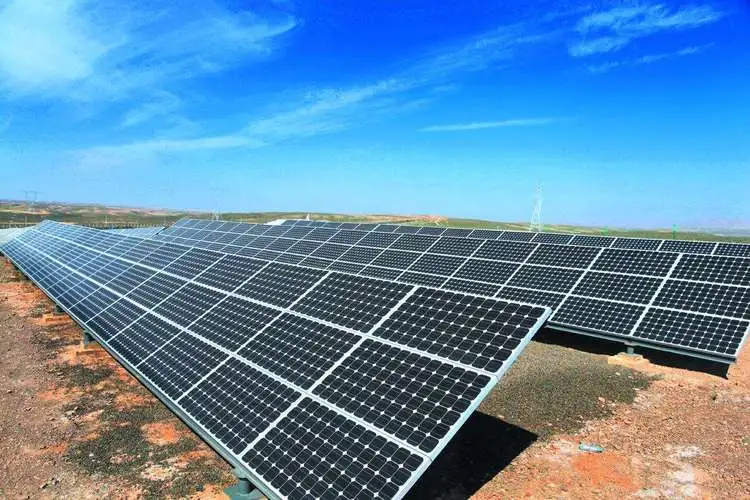 |
Welcome To Evlithium Best Store For Lithium Iron Phosphate (LiFePO4) Battery |
 |

Introduction:
Solar power has gained immense popularity as a clean and sustainable energy source. It offers numerous advantages, including reduced reliance on the grid and lower energy costs. One application of solar power that has gained attention is charging LiFePO4 batteries. In this article, we will explore the benefits and considerations of charging LiFePO4 batteries with solar power and provide a step-by-step guide to help you effectively harness solar energy for your battery charging needs.
LiFePO4 batteries, or lithium iron phosphate batteries, are a type of rechargeable battery known for their high energy density, long cycle life, and excellent thermal stability. They have become increasingly popular in various applications, including solar energy storage, electric vehicles, and off-grid systems. Compared to traditional lead-acid batteries, LiFePO4 batteries offer higher energy efficiency, faster charging capabilities, and better overall performance.
Solar Panel Size and Capacity: The size and capacity of your solar panels should match your energy needs and charging requirements. Ensure that the solar panel's wattage and voltage output are compatible with your battery system.
Charge Controller Selection: A charge controller regulates the charging process and prevents overcharging or damage to the batteries. Opt for a charge controller specifically designed for LiFePO4 batteries and capable of handling the desired charging current.
Battery Capacity and Configuration: Determine the battery capacity required based on your energy needs and the duration of autonomy required. Consider the number of batteries and their series or parallel connections to achieve the desired voltage and capacity.
Charging Efficiency: Solar panel efficiency, charge controller efficiency, and overall system wiring can affect the charging efficiency. Optimize each component for maximum energy conversion and minimal losses.
Step 1: Assess Your Energy Needs: Determine your energy requirements by calculating the power consumption of your devices or appliances. This will help you determine the battery capacity and solar panel size needed.
Step 2: Determine Solar Panel Requirements: Calculate the solar panel capacity required based on your energy needs and the available sunlight. Consider factors such as geographical location and shading when sizing the solar array.
Step 3: Choose the Right Charge Controller: Select a charge controller designed for LiFePO4 batteries and suitable for the charging current of your solar panels. Ensure it offers features such as overcharge protection, temperature compensation, and load control if needed.
Step 4: Connect the Solar Panels and Charge Controller: Install the solar panels in a suitable location, preferably where they receive maximum sunlight. Connect the panels to the charge controller using appropriately sized cables and connectors, ensuring correct polarity.
Step 5: Connect the Battery Bank: Connect the LiFePO4 battery bank to the charge controller, following the manufacturer's instructions. Ensure proper cable sizing, polarity, and secure connections.
Step 6: Monitor the Charging Process: Regularly monitor the charging process, voltage levels, and system performance. This will help you identify any issues and ensure optimal battery charging.
Step 7: Maintain and Optimize Battery Performance: Follow the manufacturer's recommendations for battery maintenance. Periodically check the battery voltage, clean the solar panels, and inspect the entire system for any signs of damage or wear.
Avoid Overcharging: LiFePO4 batteries are sensitive to overcharging, which can reduce their lifespan or cause safety issues. Ensure your charge controller has overcharge protection features and set appropriate charging parameters.
Optimal Charge and Discharge Rates: Follow the manufacturer's recommendations for optimal charge and discharge rates. Avoid deep discharging the batteries and aim for regular partial charging to maximize their lifespan.
Temperature Considerations: LiFePO4 batteries perform best within a specific temperature range. Extreme temperatures can affect their performance and lifespan. Ensure proper ventilation and consider temperature compensation features in the charge controller.
Regular Maintenance and Monitoring: Perform routine maintenance tasks such as cleaning the solar panels, checking cable connections, and monitoring battery performance. This helps ensure optimal system efficiency and prolongs the battery's life.
Charging LiFePO4 batteries with solar power provides numerous benefits, including reduced environmental impact, cost savings, energy independence, and longer battery lifespan. By following the step-by-step guide and best practices outlined in this article, you can effectively harness solar energy to charge your LiFePO4 batteries and enjoy a reliable and sustainable power source.
Can I charge LiFePO4 batteries with a regular solar panel?
Yes, you can charge LiFePO4 batteries with a regular solar panel. However, it is crucial to ensure the voltage output of the solar panel matches the battery system's requirements, and a suitable charge controller is used.
How long does it take to charge LiFePO4 batteries with solar power?
The charging time depends on various factors such as solar panel capacity, battery capacity, and available sunlight. On average, it can take several hours to a day to fully charge LiFePO4 batteries using solar power.
Can I use a LiFePO4 battery charger to charge other battery types?
LiFePO4 battery chargers are specifically designed for LiFePO4 chemistry and may not be suitable for charging other battery types. It is recommended to use chargers specifically designed for the battery chemistry you intend to charge.
Is it safe to leave LiFePO4 batteries connected to solar panels?
Leaving LiFePO4 batteries connected to solar panels is generally safe as long as the system is properly designed, and suitable charge controllers are used to prevent overcharging. However, it is essential to monitor the system and follow safety guidelines.
Can I use LiFePO4 batteries for off-grid solar systems?
Yes, LiFePO4 batteries are well-suited for off-grid solar systems due to their high energy density, long cycle life, and superior performance. They offer reliable energy storage and can provide power during periods of low or no sunlight.
Edit by editor
All Rights reserved © 2025 Evlithium Limited